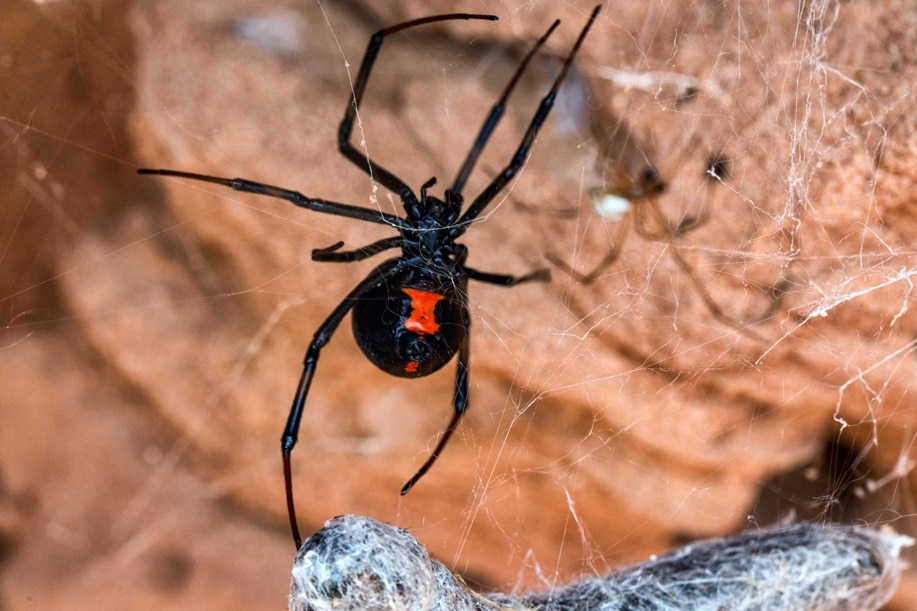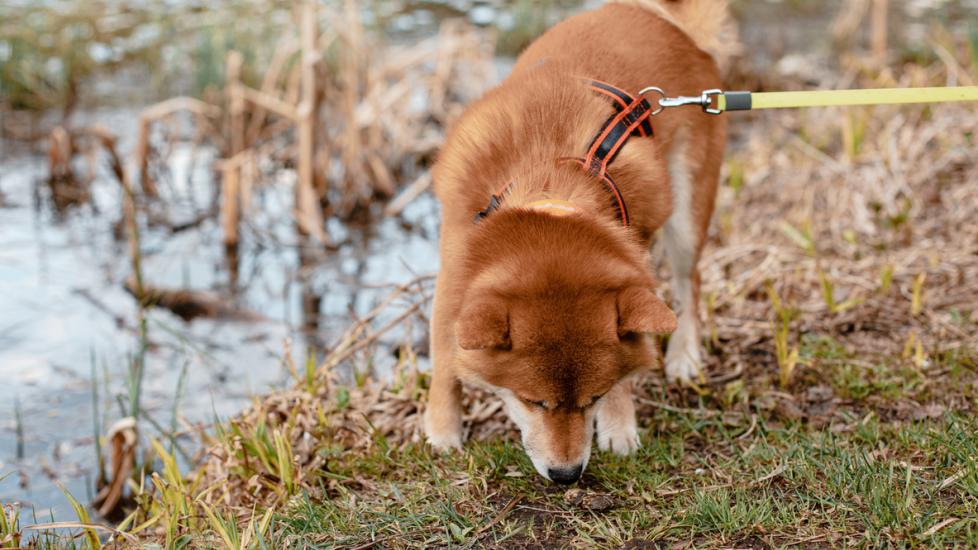Black Widow Spider Bite Poisoning in Dogs
What Is Black Widow Spider Bite Poisoning in Dogs?
Widow spiders are found worldwide, mostly in tropical and temperate regions.
The incidence of black widow spider bites in dogs is unknown, but it is noteworthy because a single bite can be lethal to a dog. Black widow spider venom is highly toxic, typically exceeding the toxicity of most snake venom. Black widow venom contains a neurotoxin that causes severe muscle spasms and tremors, which can progress to respiratory distress, paralysis, and even death.
A venomous spider bite is a medical emergency. If you witness or suspect your dog has been bitten by a black widow, take them immediately to your local veterinary emergency hospital.
Recommended Products
Symptoms of Black Widow Spider Bite Poisoning in Dogs
Clinical signs of black widow spider bite may occur as quickly as 30 minutes after the bite but can worsen over the next 8 hours. Acute signs often resolve in 48-72 hours, but weakness and lethargy can persist for several months. Common clinical signs include:
-
Vomiting/Drooling
-
Diarrhea
-
Lethargy
-
Rapid weight loss
-
Vocalization such as crying, whining, or howling
-
Muscle spasms, which can be severe
-
Pain, mostly associated with muscle pain
-
Abdominal cramping
-
Trouble breathing
-
Elevated heart rate
-
Elevated blood pressure
-
Agitation and restlessness
-
Trouble walking, stumbling
-
Tremors or seizures
-
Paralysis
Causes of Black Widow Spider Bite Poisoning in Dogs
Black widow spiders are generally shy, but they will bite if encountered by curious pets. Black widow spiders like to make their homes around buildings. Once inside houses, they often choose undisturbed, cluttered areas such as basements, crawl spaces, dark corners, or under cabinets. Outside, black widow spiders often nest in wood or leaf piles, under stones, or in sheds and garages. Their webs are messy and irregular, typically located at ground level.
There are many factors that determine the severity of clinical signs associated with black widow spider bite poisoning in dogs, including:
-
How much venom is received (black widow spiders can control the amount of venom injected)
-
Size of the spider (the bigger the spider, the more venom it has)
-
Time of year (affects venom toxicity)
-
Size of the dog (smaller dogs will get a larger ratio of venom)
-
Age of the dog (pediatric and geriatric dogs are often more affected)
-
Bite location
-
Concurrent health problems of the bitten dog
What Does a Black Widow Look Like?

The male black widow spider has too small of a jaw to bite a dog. However, the female black widow spider is twice the size of the male and is responsible for life-threatening bites. The female black widow spider is a black, shiny spider measuring 0.75-1 inch in length with a red or orange hourglass mark on the underside of her abdomen.
Black widow spiders are found in every state of the United States, except Alaska, but are more concentrated in the southern states.
My Dog Was Bitten by a Black Widow, Now What?
Due to their potentially life-threatening nature, all black widow spider bites should be considered medical emergencies.
Home care is not recommended and should not be attempted, as it is ineffective and potentially harmful. Do not apply ice/heat packs or ointments to the dog unless specifically instructed to do so by your veterinarian. First aid measures are not beneficial in treating black widow spider bites.
If the suspected spider can be safely captured (such as via glue trap), this may help your veterinarian in identification and treatment, but extreme care must be taken not to become bitten yourself.
How Veterinarians Diagnose Black Widow Spider Bite Poisoning in Dogs
Diagnosis of a black widow spider bite is based on history and clinical signs. There is no specific veterinary test for black widow spider bites or venom. Diagnosis of spider bites can be difficult unless the bite is witnessed by the pet parent.
Your veterinarian will start with a physical examination to assess for pain, wounds, muscle tremors, and overall neurologic status. A tense abdomen is very common but not specific. Unfortunately, evidence of a black widow spider bite may be very difficult to find. The site of the bite is often initially painful and has mild redness but does not incur local tissue damage, so a wound is typically not present.
A complete blood count, serum blood chemistry, and urinalysis will likely be recommended for a baseline evaluation and to rule out other possible causes. Elevated white blood cell count and elevated creatine kinase (an enzyme released when there is muscle damage) may be seen.
Treatment of Black Widow Spider Bite Poisoning in Dogs
Treatment is largely based on supportive care including IV fluids to maintain hydration, pain medication, muscle relaxers, anti-nausea medications, and medications to treat tremors and seizures.
An antivenom is available as an antidote for black widow spider venom, but it’s not readily available at most veterinary offices and has been associated with severe anaphylactic reactions in dogs. For this reason, the antivenom is likely reserved for high-risk or severely affected dogs.
Recovery and Management of Black Widow Spider Bite Poisoning in Dogs
Early and aggressive care is crucial for successful treatment of black widow spider bite poisoning in dogs. The prognosis can vary based on how much toxin was injected through the spider’s bite, time from bite to initiation of treatment, and individual pet’s response to therapy. Response to treatment is often uncertain for the first 2-3 days after the bite occurs.
Most dogs with moderate to severe clinical signs will remain hospitalized for 2-3 days for continued supportive care and medications. While most dogs that survive go on to live normal lives with minimal long-term effects, lethargy and weakness may persist for several weeks to months.
Prevention of Black Window Spider Bite Poisoning in Dogs
Black widow spiders can be found indoors and outdoors and are typically around houses. To help decrease the odds of a black widow spider bite, reduce outdoor structures such as wood or leaf piles. It may be helpful to keep your dog on a leash when walking or hiking in areas with lots of logs or rocks where spiders may be hiding.
In the house, try to keep your dog out of areas where spiders may live, such as crawl spaces and basement corners. The use of sticky/glue traps can be a great non-chemical way to catch spiders as well as a consultation with an exterminator service, but be sure to inform them of any pets in the household before they apply chemicals internally or externally.
Featured Image: iStock.com/Alina Nikitaeva
References
Merck Manual. Spider and Scoprion Bites in Animals. November 2022
Pet Poison Helpline. Black Widow Spider.
Peterson, Michael E. Small Animal Toxicology. 3rd ed. Elsevier Saunders; 2001.
Hovda, Lynn, et al. Blackwell’s Five-Minute Veterinary Consult Clinical Companion: Small Animal Toxicology. 2nd ed. John Wiley & Sons; 2016.




